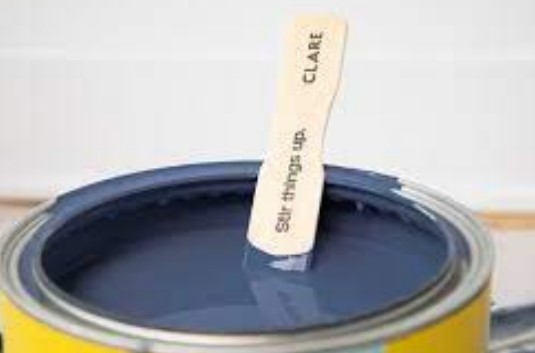Paint by the Gallon: Estimating Coverage for Your Project
 Paint by the Gallon is a comprehensive guide to estimating the amount of paint you need for your next painting project. Whether you are painting a room, a piece of furniture, or an entire house, this guide will help you determine the amount of paint you need to complete the job. It will also provide tips on how to save money and time when it comes to painting. With Paint by the Gallon, you can be sure that you have the right amount of paint for your project and that you are getting the best value for your money.
Paint by the Gallon is a comprehensive guide to estimating the amount of paint you need for your next painting project. Whether you are painting a room, a piece of furniture, or an entire house, this guide will help you determine the amount of paint you need to complete the job. It will also provide tips on how to save money and time when it comes to painting. With Paint by the Gallon, you can be sure that you have the right amount of paint for your project and that you are getting the best value for your money.
How to Calculate the Amount of Paint Needed for Your Project: A Guide to Estimating Coverage by the Gallon
Estimating the amount of paint needed for a project can be a daunting task. However, with the right information and a few simple calculations, it is possible to accurately estimate the amount of paint needed for a project. This guide will provide an overview of the steps necessary to calculate the amount of paint needed for a project, measured in gallons.
First, it is important to determine the total square footage of the area to be painted. This can be done by measuring the length and width of the area and then multiplying the two numbers together. For example, if the area to be painted is 10 feet long and 8 feet wide, the total square footage would be 80 square feet.
Next, it is necessary to determine the coverage rate of the paint being used. This is typically expressed in square feet per gallon. This information can be found on the paint can or on the manufacturer’s website. For example, if the paint has a coverage rate of 400 square feet per gallon, this means that one gallon of paint will cover 400 square feet.
Once the total square footage and coverage rate of the paint have been determined, it is possible to calculate the amount of paint needed for the project. This can be done by dividing the total square footage by the coverage rate. For example, if the total square footage is 80 square feet and the coverage rate is 400 square feet per gallon, the amount of paint needed would be 0.2 gallons (80 divided by 400).
Finally, it is important to consider any additional factors that may affect the amount of paint needed. For example, if the surface is rough or porous, more paint may be needed to achieve the desired coverage. Additionally, if the paint is being applied to a previously painted surface, it may be necessary to use a primer before applying the paint.
By following these steps, it is possible to accurately estimate the amount of paint needed for a project. Knowing the total square footage of the area to be painted, the coverage rate of the paint, and any additional factors that may affect the amount of paint needed, it is possible to calculate the amount of paint needed for a project, measured in gallons.
Tips for Maximizing Paint Coverage and Minimizing Waste: A Guide to Getting the Most Out of Your Gallon of Paint
When it comes to painting, it is important to maximize paint coverage and minimize waste in order to get the most out of your gallon of paint. This guide will provide tips on how to do just that.
1. Prepare the surface. Before you begin painting, make sure the surface is properly prepared. This includes cleaning the surface, filling any cracks or holes, and sanding any rough spots. This will ensure that the paint adheres properly and that you get the most coverage out of your gallon of paint.
2. Use the right tools. Using the right tools for the job is essential for maximizing paint coverage and minimizing waste. Make sure you have the right brushes, rollers, and other tools for the job.
3. Use primer. Primer is a great way to ensure that the paint adheres properly and that you get the most coverage out of your gallon of paint.
4. Use multiple coats. Applying multiple coats of paint will help to ensure that you get the most coverage out of your gallon of paint.
5. Use the right technique. Make sure you are using the right technique when painting. This includes using the right amount of pressure, using the right brush strokes, and using the right amount of paint.
6. Clean up properly. Make sure you clean up any spills or drips immediately. This will help to ensure that you don’t waste any paint.
7. Store paint properly. Make sure you store your paint properly. This includes keeping it in a cool, dry place and making sure the lid is tightly sealed.
By following these tips, you can maximize paint coverage and minimize waste in order to get the most out of your gallon of paint.Paint by the Gallon is an excellent tool for estimating the amount of paint needed for any project. It provides an easy-to-use calculator that takes into account the size of the project, the type of paint, and the number of coats needed. With Paint by the Gallon, you can accurately estimate the amount of paint needed for any project, saving you time and money.